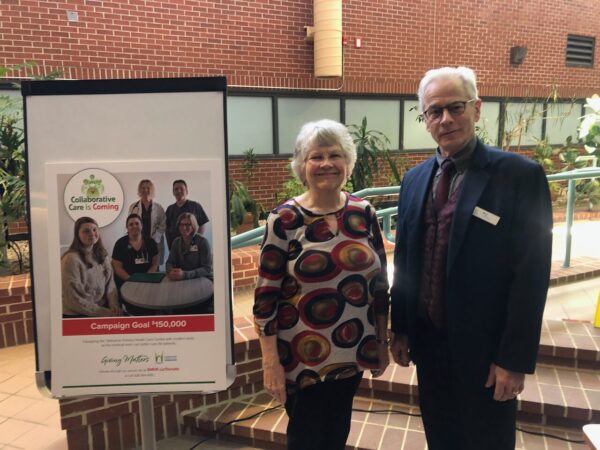
Property owners in Sackville and Dorchester will see their 2024 tax bills increase on par with their assessment numbers this year, as their proposed tax rate remains mostly flat (dropping slightly by about a half cent per $100 of assessed value). But in the former Local Service Districts (LSDs), residents will not only see increases due to assessments, but also from a proposed increase in tax rate of 5 cents per $100 in assessed value.
Councillor Barry Hicks voiced concerns over the proposed increase at a council meeting on Monday, after a draft budget presentation from treasurer Michael Beal.
“The LSDs are going up with no services supplied,” said Hicks on Monday. “I don’t understand how we can keep raising… without giving them some services.”
Treasurer Michael Beal explained that the increase in tax rate for LSDs without any change in service level is an intentional effect of amalgamation, and will continue for years to come.
“The amalgamation resulted in the Local Service Districts paying for the services that they were already being provided,” said Beal, listing active living and culture (formerly parks and recreation), community and corporate services, financial services, and policing and fire protection. Beal said that as treasurer for the former town of Sackville, “every year we argued with the province that the Local Service Districts were not paying their fair share towards fire protection, and every year we were told it’s a formula and that’s all you’re getting.”
“The purview of amalgamation was that you would be paying more taxes for the services you already get,” said Beal. “And yes, it is a hard position to take, but that was the provincial government that implemented that, and we only have to work with what we were provided.”
During the amalgamation process, then-minister of local government Daniel Allain did not directly address future tax adjustments, but repeatedly said, “people will pay for services they receive and they will not pay for the services they do not receive.”
Former town and village tax bills remain highest
Beal spent nearly two and half hours Monday afternoon explaining the municipality’s plan for a nearly $18 million operating budget in 2025, including maintaining all programs and services, continuing to use operating funds for capital projects instead of borrowing, and putting more into capital reserves for future major projects. But with 93% of the municipality’s revenue coming from property taxes, questions focussed on tax rates, and the difference between those in the former town and village, and the former LSDs.

CHMA crunched the numbers for a property assessed at $250,000 in January 2024, to show the various tax increases across the sub-units of the municipality, which includes the former town of Sackville, village of Dorchester, and LSDs of Sackville, Dorchester and Point de Bute. We found that the highest increase in both dollar value ($375) and percentage (15.4%) would take place in the former Sackville LSD, where the average increase to assessed values was highest. But the area also boasts the lowest tax bills in the municipality, clocking in at $2810 in 2025 for our hypothetical property.
If the same property were in the former village of Dorchester it would see the smallest increase in tax bills, going up $169, or 4.38%. But the 2025 tax bill would still top $4,000 for the same example property in Dorchester village.
The most expensive tax bill for our hypothetical property would come in the former town of Sackville, where the tax bill would hit $4,141.
Shared and local services
The Tantramar budget calculates costs for both shared and non-shared services. Shared services means almost everything the municipality does, except for streets and roads.
After amalgamation the province held on to responsibility for road maintenance and operations in the former LSDs, and so they charge a separate property tax at a rate of 0.4115 per $100 to properties in LSDs.
In Sackville and Dorchester, the municipality’s public works department looks after streets and sidewalks, and charges a local tax rate of 0.5526 to property owners in the former town and village.
The shared services budget covers everything else. The former town, village and LSDs are meant to share those costs, with LSDs being slightly discounted at 90%, to reflect the additional overhead required to run former town and village operations.

According to Beal’s calculations, the shared services rates should be 0.9439 for the former town and village, and 0.8495 for the LSDs. But because the province maintained low property tax rates in the LSDs before amalgamation, there’s a big gap between current LSD tax rates, and what an amalgamated, shared services budget requires. To prevent sudden, catastrophic increases in tax rates, the province set a maximum yearly increase of 5 cents per $100 of assessment. That means some adjustments to what the shared rates “should be”, says Beal, with rates in Sackville and Dorchester going up slightly, and rates in the LSDs dropping.
For LSDs with very low tax rates, it will take years to reach the level rates “should be”. Property owners in the Sackville LSD won’t reach the intended level of about 85 cents per $100 until 2030. Those in Point de Bute will get there in 2026, because their rate was already much higher at amalgamation.
Budget presentations will continue Thursday with a presentation on the proposed 2025 capital budget.



















